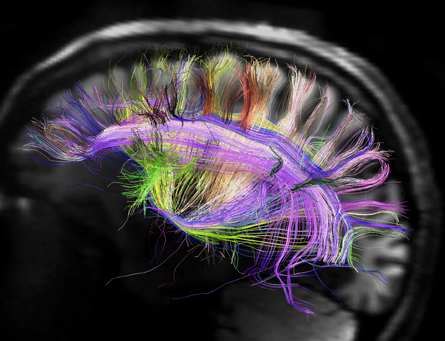Mapping the brain’s superhighways
Scanning technique reveals order to information flow
- More than 2 years ago
The impossibly complicated brain just got a little simpler. Instead of looking like a tangled mess of noodle soup, pathways in the brain are arranged more like a package of neatly interwoven ramen noodles, a new brain scanning study reveals. The results offer more clues to how the human brain gets built and how it has evolved.

Scientists led by Van Wedeen of Massachusetts General Hospital and Harvard Medical School in Boston used a scanning technique called diffusion magnetic resonance imaging that detects the direction of traffic flow along white matter tracts, the brain’s information superhighways. The scans revealed that these brain signals form a grid, made up of parallel and perpendicular tracts woven together into curved sheets.
This grid is a general feature of primate brains, Wedeen and colleagues report in the March 30 Science. Brains of rhesus monkeys, owl monkeys, marmosets and prosimian galagos contained similar geometric patterns to those found in human volunteers, suggesting the grid’s deep evolutionary roots.
One day, doctors may be able to diagnose brain disorders by identifying variations in this regular brain pattern.







